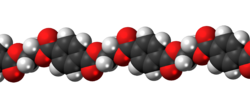One of the many practices of dentist is the root Canal. A root canal is the procedure of removing bacteria by drilling out the canals of a dead tooth. But could dentist be leaving more bacteria and toxins then they are taking out?
Dr. Thomas Rau who has run the Paracelsus Clinic, a cancer clinic, since 1958 in Switzerland recently found that out of last 150 breast cancer patients treated, 148 had one or more root canal teeth on the same meridian as the original breast cancer tumor.
When the root canal is performed, dentist remove all the bacteria in the dead tooth and then fill it with gutta percha, a rigid natural latex produced from the sap of these trees, to try and stop bacteria from re- entering the tooth. This seems fine but because of the shape of our teeth canals it is impossible to remove 100% of bacteria and fill the tooth completely. This leads to the result of a tooth hiding and creating bacteria and the canal becomes a prime environment for microbes and bacteria. The bacteria becomes even more dangerous because once the canal is filled, the blood supply is cut off to that tooth, which keeps your immune system from killing off the microbes and bacteria in the tooth.

Studies have proven that the microbes in the teeth originate from the same biological location as the cancer cells in patients having root canals and breast cancer. The toxins formed in the tooth can leak into the body and form disease and infection.This have been proven in multiple studies yet it has not been published by the ADA.
Even with the controversy surrounding the root canals and the health concerns that follow it, not fixing dead teeth is not an alternative. Dead teeth left untreated can cause the infection that killed the original tooth can leak into the gum and eventually to the jaw bone and could lead to a person losing part of their jaw. An alternative to the root canal is extraction, another popular dentist procedure. Besides extraction there has been recent trials of injecting the chemical ozone into the canal after it has been cleaned instead of filling it with the gutta percha. The ozone is said to be essential to kill all bacteria and keep it from forming new bacteria and microbes.
http://naturaldentistry.us/1672/ozone-therapy-as-treatment-in-dentistry/
http://articles.mercola.com/what-is-a-root-canal.aspx
http://naturaldentistry.us/1224/can-root-canals-cause-breast-cancer/
Dr. Thomas Rau who has run the Paracelsus Clinic, a cancer clinic, since 1958 in Switzerland recently found that out of last 150 breast cancer patients treated, 148 had one or more root canal teeth on the same meridian as the original breast cancer tumor.
When the root canal is performed, dentist remove all the bacteria in the dead tooth and then fill it with gutta percha, a rigid natural latex produced from the sap of these trees, to try and stop bacteria from re- entering the tooth. This seems fine but because of the shape of our teeth canals it is impossible to remove 100% of bacteria and fill the tooth completely. This leads to the result of a tooth hiding and creating bacteria and the canal becomes a prime environment for microbes and bacteria. The bacteria becomes even more dangerous because once the canal is filled, the blood supply is cut off to that tooth, which keeps your immune system from killing off the microbes and bacteria in the tooth.
Studies have proven that the microbes in the teeth originate from the same biological location as the cancer cells in patients having root canals and breast cancer. The toxins formed in the tooth can leak into the body and form disease and infection.This have been proven in multiple studies yet it has not been published by the ADA.
Even with the controversy surrounding the root canals and the health concerns that follow it, not fixing dead teeth is not an alternative. Dead teeth left untreated can cause the infection that killed the original tooth can leak into the gum and eventually to the jaw bone and could lead to a person losing part of their jaw. An alternative to the root canal is extraction, another popular dentist procedure. Besides extraction there has been recent trials of injecting the chemical ozone into the canal after it has been cleaned instead of filling it with the gutta percha. The ozone is said to be essential to kill all bacteria and keep it from forming new bacteria and microbes.
http://naturaldentistry.us/1672/ozone-therapy-as-treatment-in-dentistry/
http://articles.mercola.com/what-is-a-root-canal.aspx
http://naturaldentistry.us/1224/can-root-canals-cause-breast-cancer/










